Wherever we go for a trip in India, we see one or the other shops selling traditional items near major tourist attractions. These shops also sell the clothes associated with that or nearby region. What makes these clothes unique is the use of “Hand Woven” fabric, an identity of that region. This fabric relates to the culture and tradition of local people. Most of this fabric is hand-weaved in the local handlooms. The land of diversity, India has many such handloom styles spread across the regions. This Indian handloom sector represents a rich and diverse cultural heritage, too.
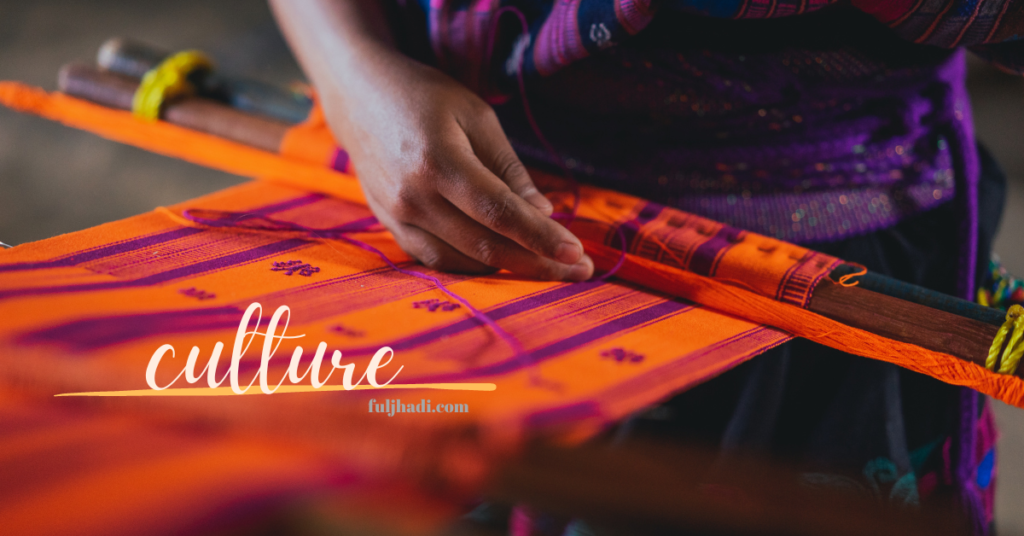
What is Indian Handloom and Why is it Important?
Handloom is a traditional way of weaving fabric by hand. It uses natural fibers and dyes that give it a unique style. The looms are manually operated and employ wooden frames or structures. It is one of the oldest and most diverse forms of textile art. In addition, it reflects the history and creativity of various regions and communities. These handlooms are also a significant source of the livelihood of the local people.
Handloom weaving communities significantly contributed to India’s socio-economic development. So, National Handloom Day is observed on 7th August by the Government of India to recognize their contribution. They chose this date because, in 1905, the Swadeshi Movement launched on the same day. Bal Gangadhar Tilak’s ideology of indigenous goods was the basis of the Swadeshi Movement. In this article, we will explore some of the most exquisite and unique styles of Indian handloom. These styles are Bandhani, Paithani, Chanderi, Kunbi, and Kanchipuram.
Bandhani: The Colorful Tie-Dye Saree with Dots and Patterns
Bandhani, also called Bandhej, connects its roots to Rajasthan and Gujarat. It is a tie-dye saree created by tying several knots on the fabric and dyeing them in different colors. The colors used are mainly bright and cheerful, such as red, yellow, green, pink, orange, etc. These colors also represent different emotions and occasions, such as green for prosperity, red for festivals, etc.
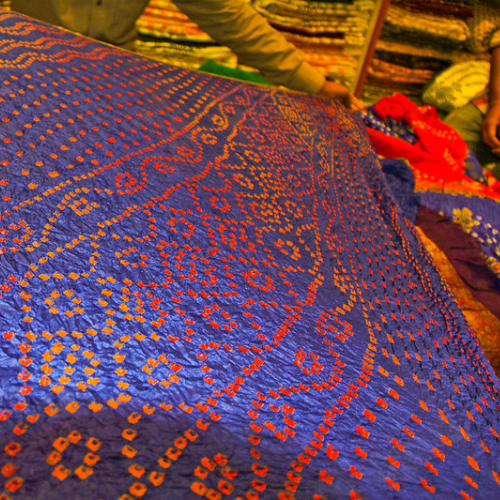
The motifs used in Bandhani or Bandhej are varied and include flowers, animals, birds, human figures, etc. Regional and cultural diversity inspires these motifs. The patterns include flowers, animals, birds, and human figures. Region-inspired varieties include the leheriya (wave) pattern from Rajasthan, the shikari (hunting) pattern from Sindh, the chokda (square) from Madhya Pradesh, etc.
Image Credit: Flickr
Bandhani saree’s history traces back to the Indus Valley Civilization around 4000 BC. The Bandhani dots can also be seen in the 6th-century paintings depicting the life of Buddha found on the wall of Ajanta Caves. Bandhani’s were popular among royalty and common alike because of their versatility and affordability.
Kunbi: The Simple and Elegant Cotton Saree with Stripes and Checks
Kunbi is a type of cotton saree that belongs to the Kunbi tribe of Goa. Kunbi is known for its simple and elegant stripes and checks. The word Kunbi means “cultivator” in the Konkani language. The fabric is usually dyed red or maroon, symbolizing the earth and fertility. Kunbi saree is worn short above the ankles with a knot over the shoulder.
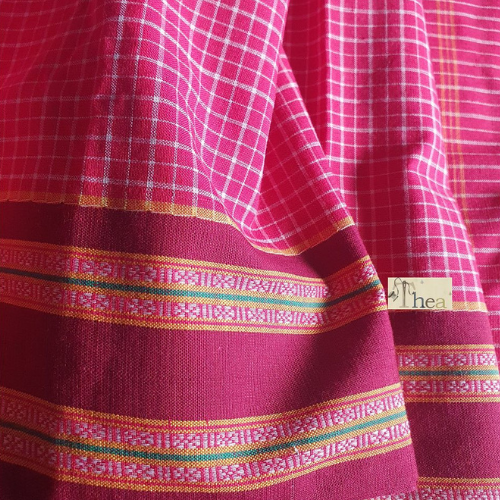
It also has stripes or checks in white or yellow, representing the rice fields and the sun. Kunbi is handmade using natural dyes and traditional looms. The weaving process includes several steps, such as spinning, warping, etc.
Image Credit: Instagram/thea.weaves
The history of the Kunbi saree dates back to the 16th century. Until 1940, women wore Kunbi without a blouse, but later, the Portuguese government made it compulsory to wear. This saree now is worn only on special occasions or for folk performances. Presently, there are no looms in Goa. However, the neighboring states of Karnataka and Tamil Nadu are still weaving the Kunbi saree, keeping this traditional attire alive.
Kanchipuram: The Rich and Heavy Silk Saree with Temple Borders and Motifs
Kanchipuram is a silk saree that originated in Kanchipuram, Tamil Nadu. It is mainly known for its rich and heavy texture and temple border. Kanchipuram sarees use pure mulberry silk from South India and zari from Gujarat. The saree is hand weaved with three shuttles, one for the warp, one for the weft, and one for the zari. It has a contrasting border and pallu, which are attached to the main body of the saree by a fine zigzag pattern called “Pitni”.
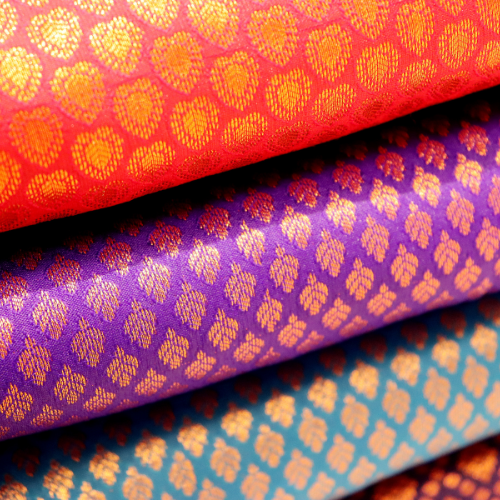
The motifs used in Kanchipuram designs take inspiration from the temples, sculptures, paintings, and literature of South India. Among the most common motifs are mango, peacock, elephant, lion, lotus, swan, etc. Bright and auspicious colors are used in a Kanchipuram saree, such as red, green, yellow, blue, gold, etc. The colors are also associated with different seasons and festivals.
Image Credit: Canva
Kanchipuram sarees have a long history that dates back to the Pallava dynasty in the 6th century AD. They were patronized by various rulers and dynasties over the centuries, such as the Cholas, the Vijayanagaras, the Nayakas, etc. Foreign travelers and traders such as Marco Polo, Ibn Battuta, etc., also admired this saree. Kanchipuram sarees are considered a symbol of grace, luxury, and tradition in Indian culture.
Chanderi: The Sheer and Delicate Silk-Cotton Saree with Floral Motifs and Butis
Chanderi is a silk-cotton saree woven in the town of Chanderi in Madhya Pradesh, also known as the “City of Weavers”. Chanderi saree is made of a fine blend of silk and cotton giving it a soft and lustrous texture. The saree is also very light and transparent, making it ideal for India’s hot and humid climate. The saree has unique small motifs or butis woven into the fabric using a needle and zari.
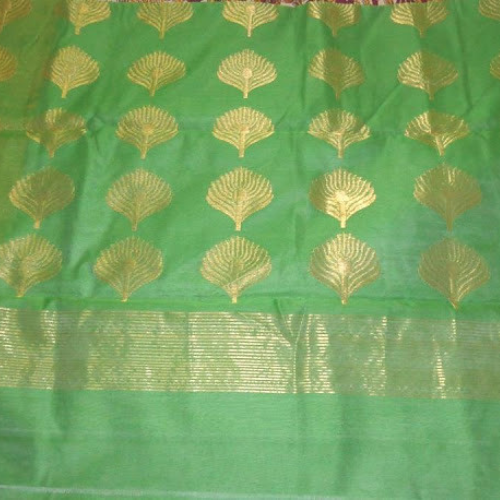
The motifs used in Chanderi designs are mainly floral, such as jasmine, rose, lotus, marigold, etc. These motifs are also influenced by the Mughal and Rajput art and architecture, such as paisley, geometric, jaali, etc. The colors used in Chanderi sarees are pastel and subtle, such as white, cream, beige, pink, green, etc. The colors use natural sources such as flowers, fruits, vegetables, etc.
Image Credit: Flickr
Chanderi sarees have a long history that dates back to the 13th century AD during the reign of the Bundela Rajputs. They were also favored by various emperors and queens over the centuries, such as Akbar, Shah Jahan, Nur Jahan, etc. These sarees even got exported to foreign countries such as China, Persia, Portugal, etc. Chanderi sarees are considered a symbol of elegance, sophistication, and femininity in Indian culture.
Paithani: The Royal Silk Sari with Zari Work and Peacock Motifs
Paithani is a type of silk saree characterized by intricate zari work on the borders and pallu. The zari is made of pure gold or silver threads woven into the silk fabric by hand using the tapestry weaving technique. This technique allows the weaver to create complex patterns and designs on both sides of the fabric.
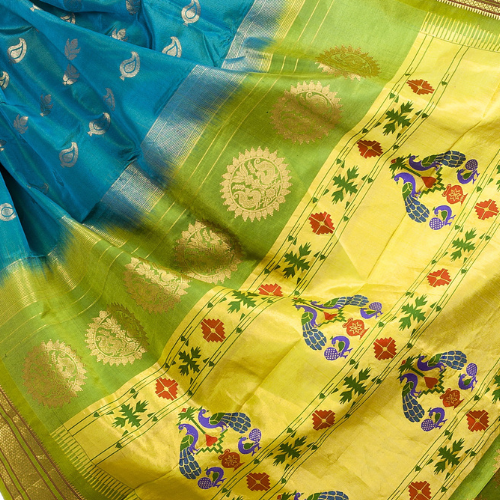
The motifs used in Paithani designs are inspired by nature, mythology, religion, and geometry. Among the most popular motifs are peacock, lotus, mango, parrot, flower vine, coin, star, etc. The colors used in Paithani sarees are vibrant, such as red, green, yellow, blue, purple, pink, etc. The colors are derived from natural sources such as plants, minerals, insects, etc.
Image Credit: Hippopx
Paithani sarees are named after the Paithan town, where the saree originated, in the Aurangabad district from the state of Maharashtra in India. They have a long history that dates back to the 2nd century BC during the Satvahana dynasty. They were patronized by various rulers and nobles over the centuries, such as the Mughals, the Peshwas, the Nizams, etc. They were also exported to foreign countries such as Greece, Rome, Persia, etc. Paithani sarees are considered a symbol of royalty, elegance, and luxury in Indian culture.
Conclusion
Indian Handloom is a fascinating and diverse form of textile art that showcases the skill, creativity, and cultural heritage of various regions and communities. Till now, we explored five of the most exquisite and distinctive types of Indian handloom: Paithani, Bandhani, Kunbi, Kanchipuram, and Chanderi. We learned about their origin, features, motifs, techniques, and significance in Indian art and fashion. We hope that this article has inspired you to appreciate and support the Indian handloom industry.


